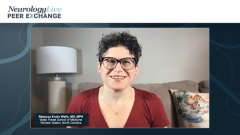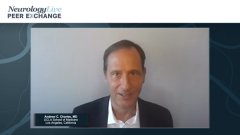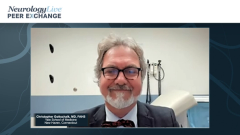
Preventative Migraine Therapy: Novel Agents
An introduction to the use of novel agents for preventive migraine therapy.
Episodes in this series

Jessica Ailani, MD: In this segment, we’re going to be talking about novel agents for the prevention of migraine. Andy, because you started talking about the old stuff, we’re going to bring you as our young gentleman and have you talk about the new stuff. It would be nice if you told us a little about how you describe some of the newer agents vs some of the older agents.
Andrew C. Charles, MD: The major concept with the newer agents is that they’re very specific in different ways. First, they’re specifically for migraine. They were developed with migraine as an indication rather than for some other indication that we dwell on.
But they’re also specific in terms of therapeutic targets. Generally speaking, many of the other therapeutic approaches that we use for migraine prevention in the past have had multiple mechanisms of action. For example, anticonvulsants work on ion channels, and neurotransmitters, and multiple mechanisms. The same with antihypertensives. The same with antidepressants. Another distinguishing feature of some of these new therapies is that they have specific neurochemical targets or anatomical targets in the case of neuromodulation. We’re going after targets that have been identified as mechanisms of migraine and treating them with therapies that are much more specific to the target than previous therapies we had available.
Jessica Ailani, MD: That’s a good overview. It’s interesting. The specificity of these targets is unique. It’s very special. It’s what makes some of these newer drugs have fewer adverse effects, which is a unique place for them. Sometimes, though, the broader action of older medications is important as well. We have to remember that. If a patient isn’t responding to an extremely specific model, sometimes we have to go broader.
Chris, I wonder what you think of that. You’re nodding. If you have a patient who’s not responding to a more specific model, do you go back to something that’s older, thinking maybe they need a more broad-acting molecule?
Christopher Gottschalk, MD, FAHS: Absolutely. That speaks to what’s fascinating and exciting about the era we live in. We have an opportunity to test these hypotheses where we know that CGRP is an intrinsic part of the migraine process, and cluster headaches as well, as far as we can tell. Having a probe that allows us to say, “Is CGRP modulation sufficient for this patient?” is a remarkable place to be and not something we had before. Sure, lots of people respond well, but if they don’t, then you’re exactly right. I say, “There’s more to this pharmacologically than we hoped or that we can play with.” I look forward to the emerging treatments in the future that will allow us to have other specific probes so that we can start to tease apart what makes up a profile of migraine in pharmacological and physiological terms.
I have…old agents and CGRP drugs, CGRP therapies, and Botox. Now we have some fascinating basic science that helps us understand why CGRP-targeted therapies in Botox would be predictably synergistic. It’s an amazing era to live in to be able to understand and see the results of combinations like that.
Jessica Ailani, MD: Very interesting. Thinking about patients being, as Stephanie [Nahas-Geiger] said earlier, these are snowflakes in that they’re individuals. Think about our drugs as being individualistic, try to match that idea in our treatment plan.
Thank you to our audience for watching this Neurology Live® Peer Exchange. I hope you’ve enjoyed watching this program as much as we’ve enjoyed spending this time together. If you’ve enjoyed this content, please subscribe to our e-newsletters to receive upcoming Peer Exchanges and other great content right in your in-box.
Transcript edited for clarity.
Newsletter
Keep your finger on the pulse of neurology—subscribe to NeurologyLive for expert interviews, new data, and breakthrough treatment updates.

























